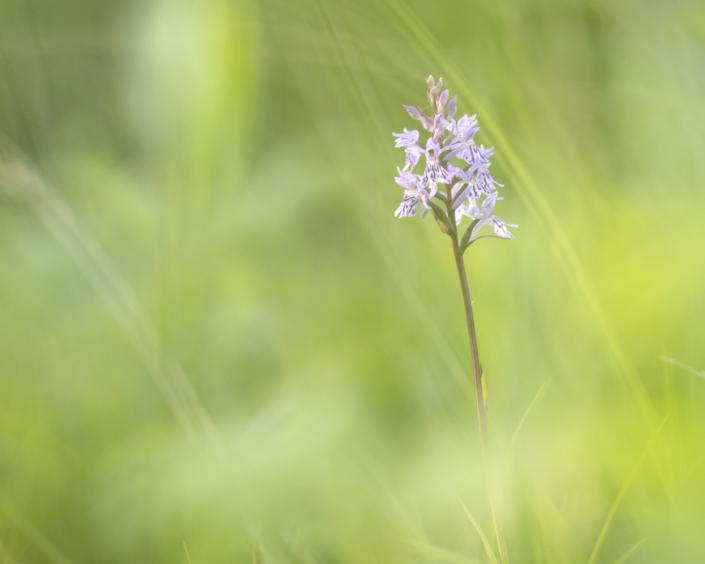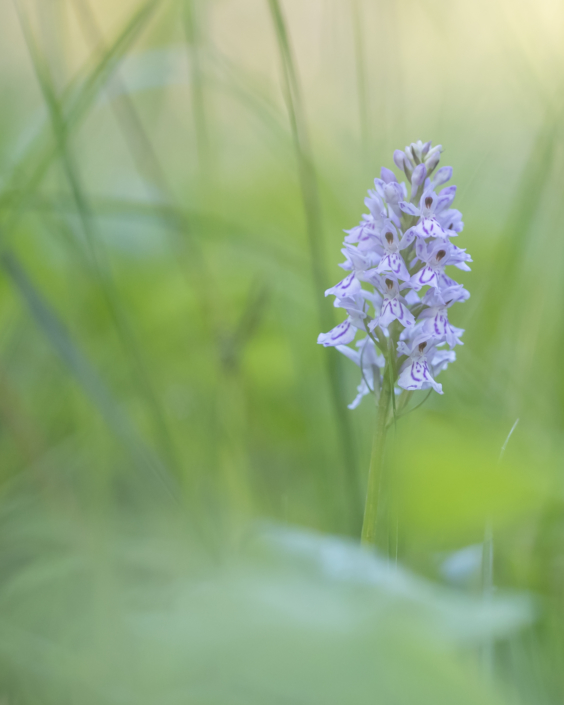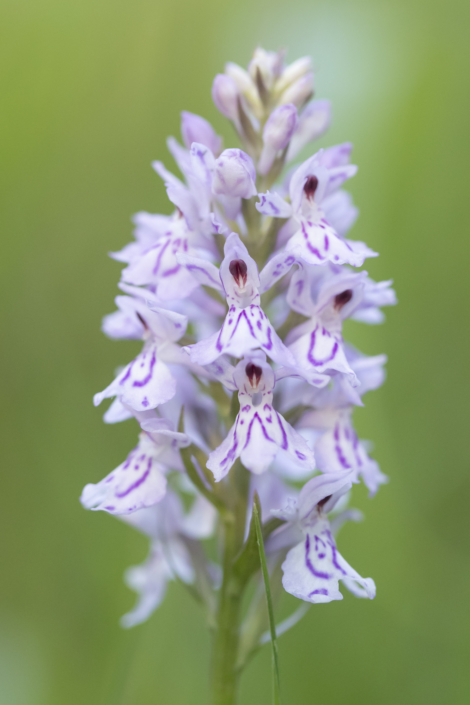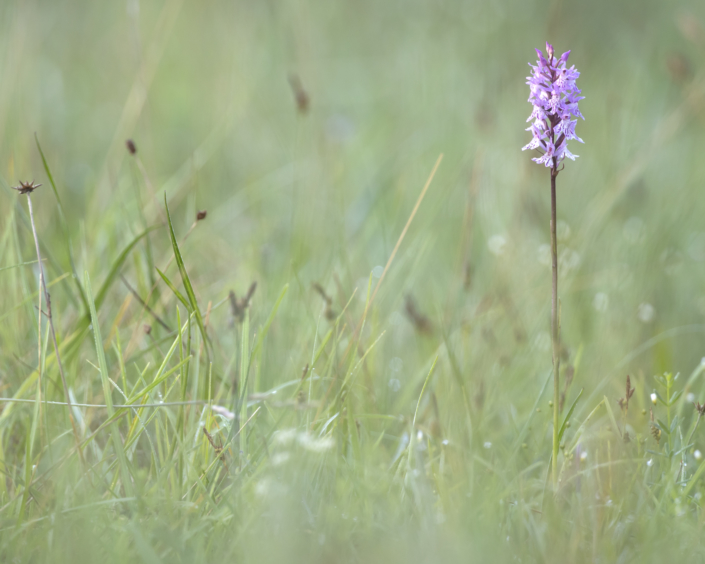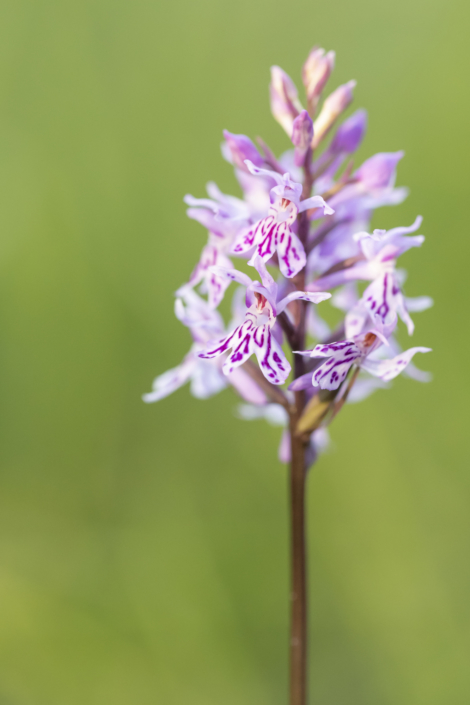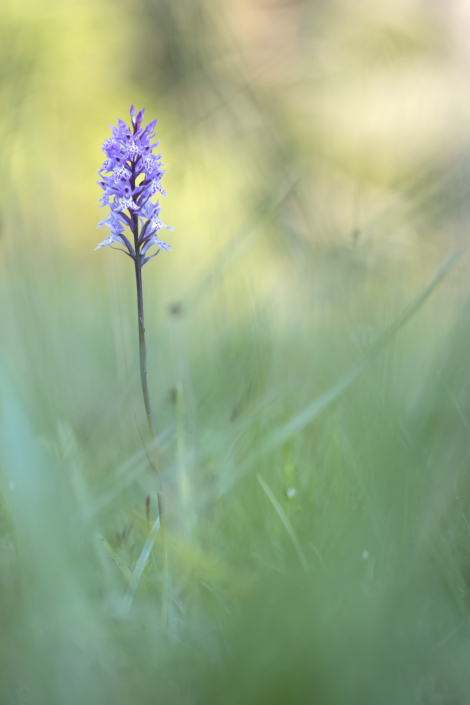This post is also available in: Swedish
Common spotted orchid
Common spotted orchid – Dactylorhiza fuchsii
is a species of flowering plant in the orchid family Orchidaceae. Dactylorhiza fuchsii is one of Europe’s commonest wild orchids. It is widespread across much of Europe, with the range extending eastward into Siberia, Mongolia and Xinjiang.
Dactylorhiza fuchsii is a herbaceous perennial plant ranging from 10 to 60 centimetres (5 to 25 in) in height. The inflorescence is a dense-flowered spike, produced in June–August, that is at first conical then cylindrical. The flower colour can vary from white to pale purple with purple spots, a symmetrical pattern of dark purple loops or dots and dashes. The lip has three lobes. The bracts are usually shorter than the flower. The lip is smaller than that of the very similar Dactylorhiza maculata and has three deeper cuts. The middle lobe is more than half as large as a lateral lobe. Some colonies are highly perfumed, attractive to day-flying moths. The leaves are narrow lanceolate, keeled and often dark-spotted.
The orchids that are most similar belong to the Dactylorhiza maculata group. D. maculata ssp. maculata is distinguished by having the lip less deeply trilobed, while D. maculata subsp. saccifera has one spur large and saccular (sac-shaped) and the bracts of the inflorescence as long as or longer than the flowers. Outside of the “maculata group”, D. majalis is very similar to D. fuchsii, but is distinguished by the following characters: the spots of the leaves are less elongated, the bracts of the inflorescence are longer and the lower transcend the inflorescence itself; it tends to be less cylindrical (a little more ‘globular’), the stem is hollow (not solid) and the leaves are slightly larger. Other similar orchids are D. incarnata and D. lapponica but these species have hollow stems and different habitat (fens and bogs).





